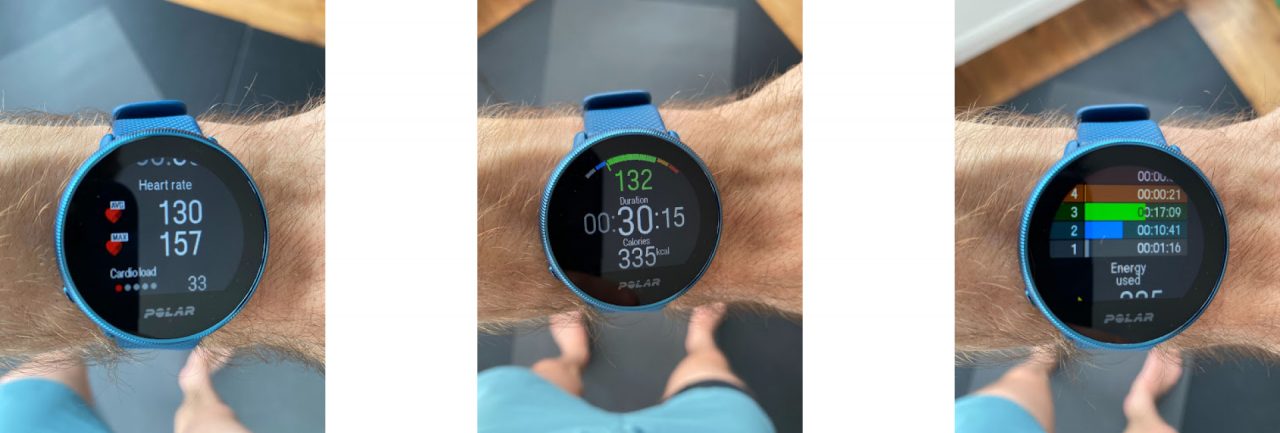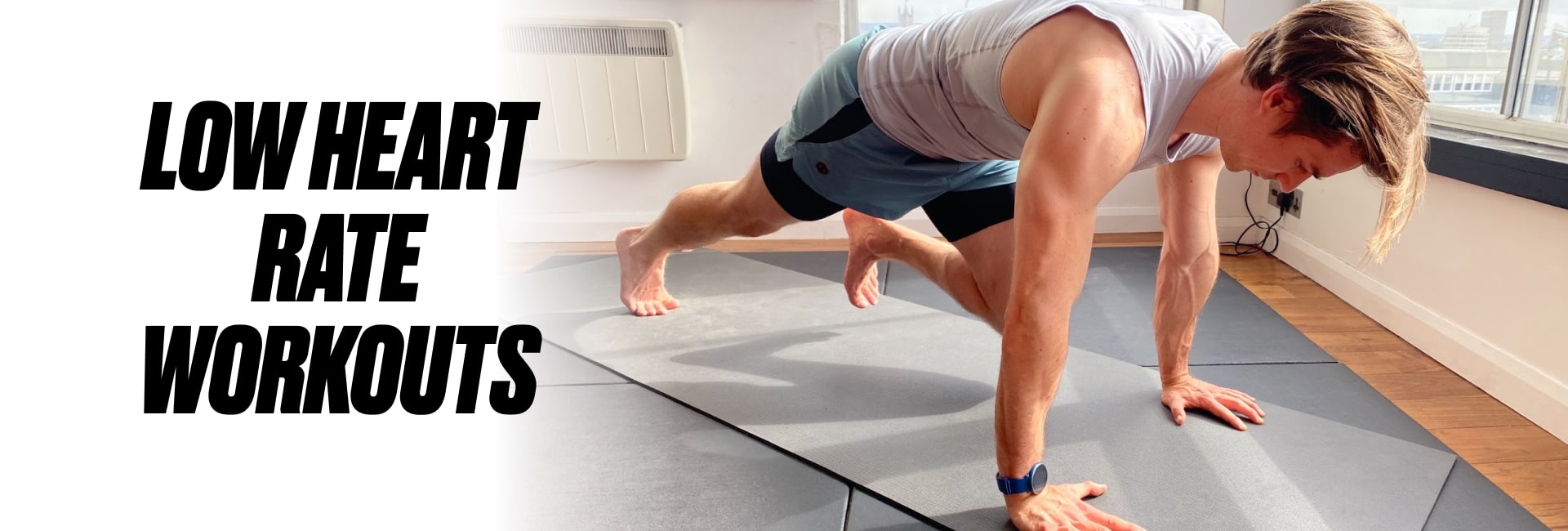Rollback one year, and I was stuck in a small flat with no access to exercise equipment. It was the beginning of a lengthy lockdown here in the UK, and I quickly had to adapt my training for the home.
I had a set of resistance bands, so that became my strength training tool. But what about cardio? At that point, I didn’t have a road bike, and running wasn’t an option either, as it aggravated an old knee injury.
Armed with my (then) Polar Ignite, I started to experiment with bodyweight exercises and figure out a smart way of doing cardio at home. My goal was to find a heart rate workout that wouldn’t spike my heart rate super high. I wanted exercises that would allow me to work continuously at a steady pace for a prolonged duration: upwards of 30 minutes.
This type of cardio goes by the name: ‘steady-state cardio’ or ‘zone 2 training’, and it’s the most effective exercise intensity to build aerobic fitness – more on that in a bit.
Could it be done on the spot with bodyweight exercises? That’s what I sought to find out.
Using heart rate data in real-time, I quickly learned that some exercises like burpees were definitely OUT. Jumping lunges didn’t work either. These high-impact exercises would spike the heart rate and couldn’t be sustained for very long.
But I did learn that a host of lower impact bodyweight exercises worked perfectly, such as jumping jacks and high knee skips.
Anti-HIIT training was born!
This new form of cardio was developed using heart rate data. Without it, I would have been using pure guesswork. As Polar says, #MeasureEveryMove if you want training to be maximally effective.
I’m going to show you exactly how you can use heart rate data to monitor an anti-HIIT workout and keep your heart rate in the sweet spot, but first, let’s review the benefits of low heart rate workouts.
Benefits of Low Heart Rate Training
Low-intensity cardio is the foundation of an effective cardio plan. #Fact. Elite endurance athletes spend upwards of 80% of their training time at a zone 2 intensity. We mere mortals should approach cardio much the same way. The aerobic system developments that come about from this kind of training are staggering and lead to a host of physiological benefits, such as:
Metabolic Health
The aerobic system produces the vast majority of our energy requirements to support life and physical activity. A healthy metabolism improves the quality of life and dramatically lowers morbidity.
Stamina
With an improved aerobic system, we produce energy way more efficiently. This means we can train harder for longer and have better stamina throughout the day.
Faster Recovery
Sleep better, wake up feeling more refreshed, recover from your workouts faster, say goodbye to ever feeling drained!
Fat Burning
Low-intensity cardio is called the ‘fat-burning zone’ for a reason. At this intensity, fat is the predominant fuel source, and in the long term, this training makes you less likely to store fat by improving fuel partitioning.
Anti-HIIT using heart rate
Quick recap: the goal of anti-HIIT is to keep the heart rate low – somewhere around 70% of your maximum heart rate is ideal (high zone 2, low zone 3). So, the first thing you should do is work out what your number is, as this becomes your goal number to maintain during the workout. Thankfully, this is easy using Polar’s maximum heart rate calculator.
From there, you’re good to go!
I’m now going to present an anti-HIIT workout you can try and instructions for adjusting your intensity to keep the heart rate roughly at your sweet spot.
Low Heart Rate WORKOUT
- High Knee Skips: 20-30 seconds.
- Rest: 0-10 seconds.
- Jumping Jacks: 20-30 seconds.
- Rest: 0-10 seconds.
- Mountain Climbers: 20-30 seconds.
- Rest: 0-10 seconds.
- Repeat the above steps for 20-40 minutes.
Guidelines

- Hit start on your wristwatch. I’m using a Polar Ignite 2 in the pics above!
- When you start the workout, it will take a bit of time for your heart rate to climb up to the target zone – that’s ok. Start by taking no rest between exercises, so your heart rate rises faster.
- Once you’re a few minutes into the workout, glance at your watch and adjust the time you perform each exercise for and the rest intervals based on what your heart rate is doing. If your heart rate is climbing too high, reduce the work time and increase the rest. If it’s too low, increase the work time and reduce the rest. You’ll soon find a pace that’s perfect for you.
- Lastly, try to breathe only through your nose. Nasal-only breathing is a far more efficient way to breathe and will get more oxygen into your body. You’ll develop aerobic fitness far quicker breathing this way.
Final Note
I hope you enjoy this low heart rate workout. By monitoring your heart rate, you can quickly individualize the session to your fitness level and continually adjust it as your fitness improves. Your training will be highly effective, and you’ll get fitter and fitter, one workout at a time!
If you liked this post, don’t forget to share so that others can find it, too.
Or give it a thumbs up!
I like this article
Please note that the information provided in the Polar Blog articles cannot replace individual advice from health professionals. Please consult your physician before starting a new fitness program.



